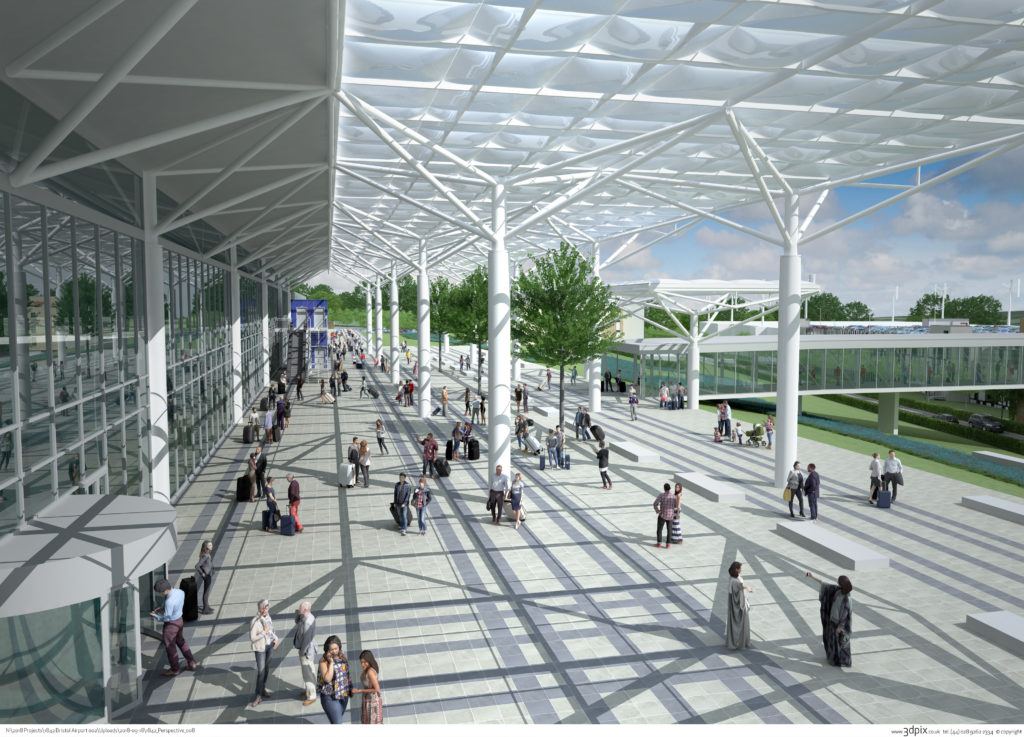Bristol Airport has submitted a planning application to North Somerset Council seeking permission to increase capacity to handle up to 12 million passengers a year by the mid-2020s.
The proposed development includes new infrastructure, improvements to existing facilities, and operational changes to ensure the airport can continue to meet demand for air travel to and from the South West of the UK well into the next decade. Annual traffic through the terminal is currently limited to 10 million passengers under the current planning permission.
Under the new plans, the terminal will be further enlarged with the additional space providing expanded passenger and baggage facilities. A canopy extension over a pedestrianized forecourt will improve the approach to the front of the building.
The number of on-site multi-storey car parks will increase to three, with a new loop road layout to improve traffic flow within the airport site. An extension to the Silver Zone, which offers the best prices for on-site car parking, is also proposed to meet demand from passengers and help to prevent overspill into local villages.
Improvements will be made to airside infrastructure, including a new taxiway link to allow improved access to the runway for aircraft. The annual cap on night flights, which limits movements between 11:30pm and 6am to a total of 4,000, will not be increased, although the airport is seeking to remove seasonal restrictions that stipulate how this quota must be distributed between summer and winter.
Local highway improvements are also proposed to ensure the additional volume of passenger journeys can be accommodated.
Dave Lees, CEO at Bristol Airport, said, “Following consultation with the local community, airline customers, passengers and other stakeholders, these plans set out sustainable development to meet demand for air travel to and from the South West and South Wales over the next decade. They will help deliver more routes, destinations and jobs.
“These plans are a practical step to ensuring we continue to connect our region to the world, providing a gateway for business, investment and tourists. At the same time, we have sought to minimise and mitigate any impacts on the local community and environment, building on our track record of investment in surface access improvements.”

